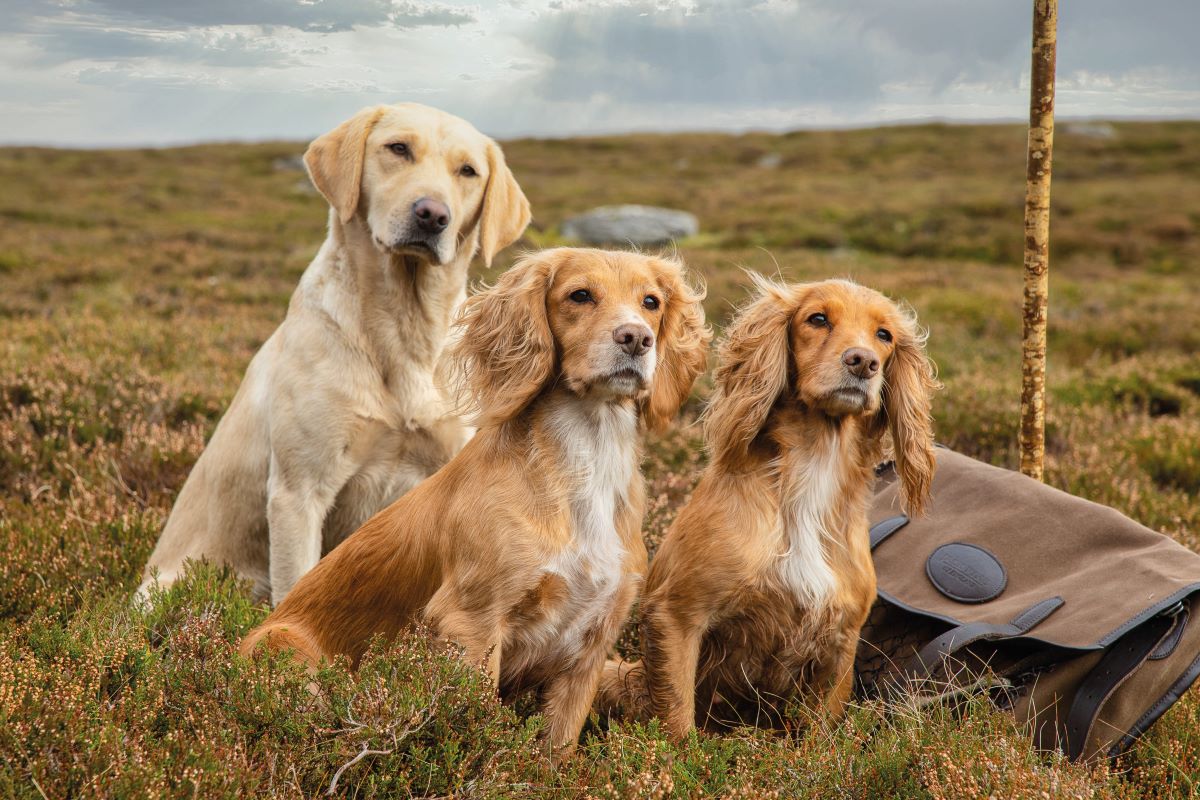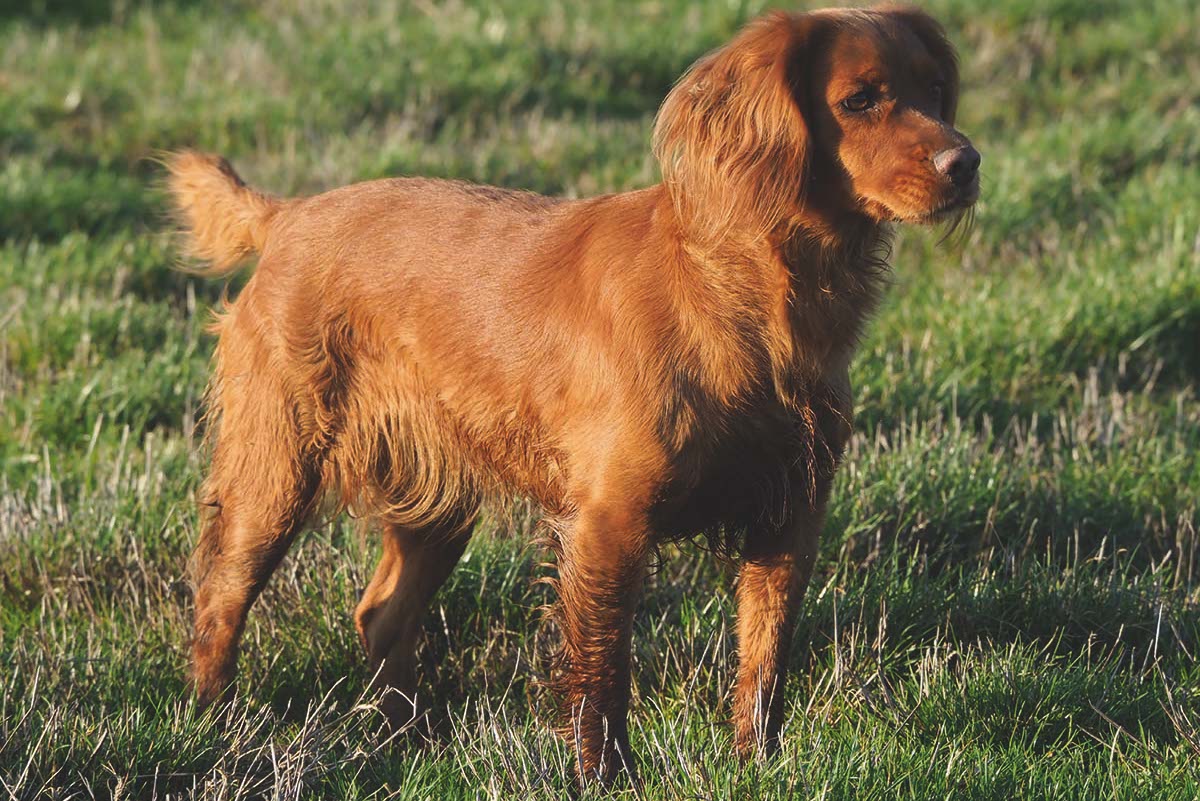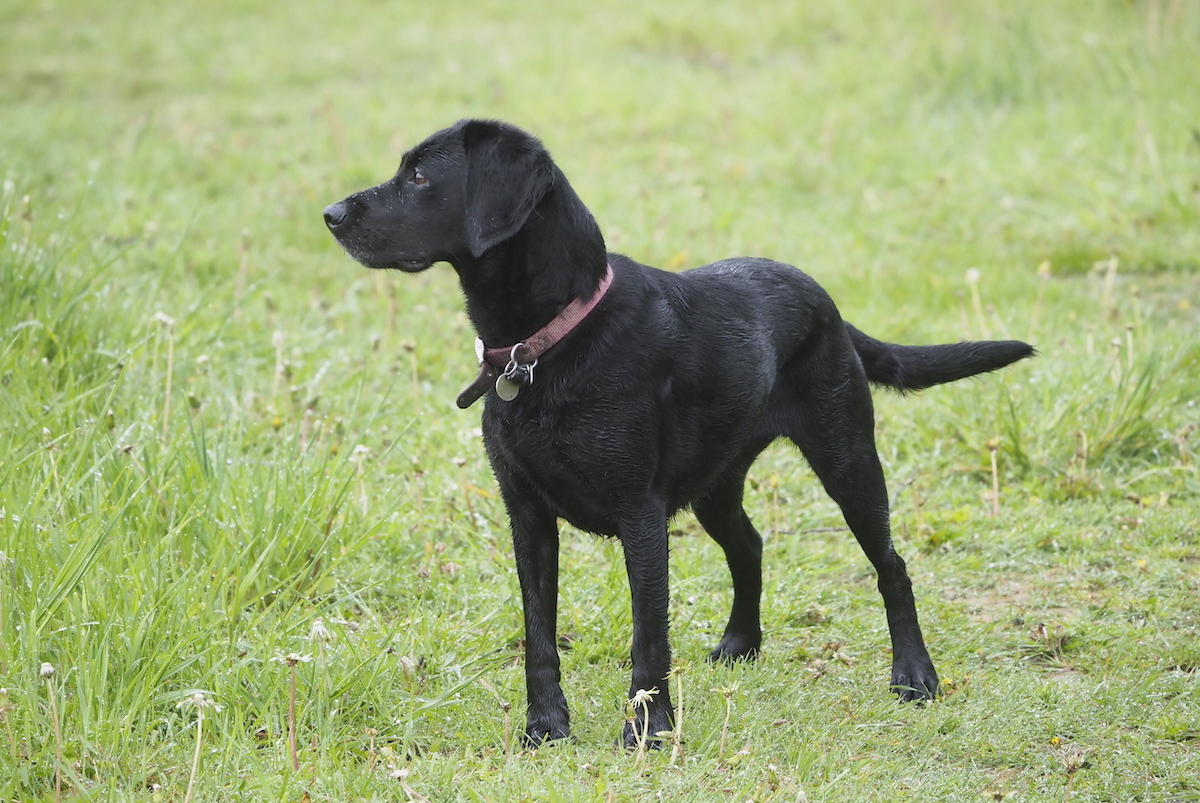Hunt, point and retrieve – truly versatile dogs
Although you will rarely see a HPR in a beating line, they are truly a versatile group of dogs used for falconry, deer stalking, picking-up and rough shooting, says Nick Ridley
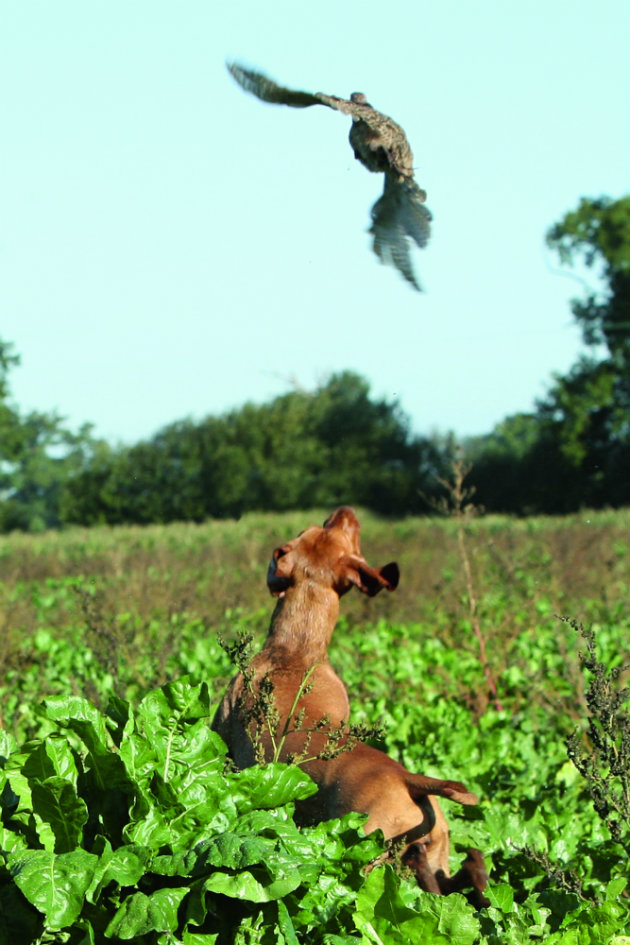
HPR breeds normally flush birds in quite an explosive way
Many years ago, when I started out photographing gundogs, I used to attend quite a few spring pointing tests and it was at these events where I not only saw my first HPR working in
the field, but I also developed some lifelong friendships with a number of handlers that are avid fans of the hunt, point and retrieve breeds. Over the following years those friendships have enabled me to watch and shoot over most of the HPR breeds and although I have never owned one I can appreciate the excitement and thrill of working one of these dogs.
The HPR breeds we see in the UK all originate from continental Europe and although you will very rarely see them in the beating line they are truly a versatile group of dogs used for falconry, deer stalking, picking-up and, of course, rough shooting. It is fair to say they are not an easy gundog for the novice to train without someone who is experienced with the breeds to give help and guidance. Many people think they are only any good for wide-open spaces such as the grouse moors, but I have seen them work very effectively in wooded areas and hedgerows. Shooting over an HPR is a different experience from shooting over a spaniel. The dog will come on point and the Gun will normally approach downwind so as not to spook the quarry. Once in position, the dog will be given the command to flush the bird and this normally happens in quite an explosive way so you have to have your wits about you. Most game will be flushed away from you and quite often very close, so you have to give it a chance to make some distance before taking a shot – it sounds easy, but believe me it isn’t!
HPR breed traits
When working out on the moors or wide- open arable fields, the dogs will range anything up to 100m each side of the handler and each breed have their own hunting “traits”. German shorthaired pointers hunt hard and are very fast, whereas the Italian Spinone work at a slower, more methodical pace. Critics of HPRs say that they are “hard mouthed” and will damage game and that they can be poor retrievers, but selective breeding and better training has improved the breed’s abilities. In truth there are gundogs of all types that suffer from various faults, so it is a bit unfair to tar a whole gundog group with the same brush. Before embarking on buying or training one of the various HPR breeds, it is well worth speaking to and getting some sound advice from the working sections of the various breeds societies.
Breed profiles

Hungarian vizsla
Hungarian vizsla
An attractive, golden dog with a long, aristocratic history. Many are now being worked in the UK, but it has a reputation for a tendency to plod. They are natural hunters with an excellent ability to take training. Not only are they great pointers, but they can be excellent retrievers as well. They will retrieve on land and in the water, making the most of their natural instincts. However, they must be trained gently and without harsh commands or strong physical correction, as they can have sensitive temperaments. Vizslas are excellent swimmers, some may need a little motivation to get in the water but as they get used to it they will love it.
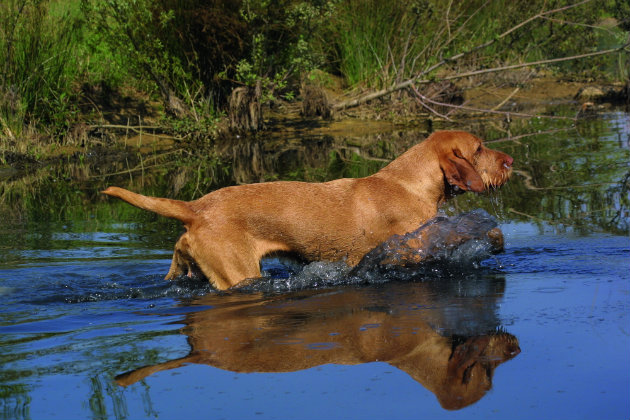
Hungarian wirehaired vizsla
Hungarian wirehaired vizsla (HWV)
The less usual wire-haired vizsla is a completely separate breed from its more commonly seen smooth-coated cousin. The HWV was developed in the 1930s, initially by Vasas Jozsef, owner of the Csabai Vizsla kennel along with Gresznarik Laszlo, who owned the de Selle German wirehaired pointer kennel. Their aim was to produce a dog that combined the colour of the vizsla with a heavier coat, and a more substantial frame, better suited for working in cold weather and retrieving from icy water. seen smooth-coated cousin.

German longhaired pointer
German longhaired pointer (GLP)
The GLP is gaining in popularity in the UK especially as one has recently won the Kennel Club HPR Championships. The breed looks very different from the German shorthaired pointer. The dog is large and impressive with a long wavy coat, they come in various colours, but are usually liver, liver-and-white or roan.

German shorthaired pointer
German shorthaired pointer (GSP)
Very versatile and the most popular of the continental HPR breeds, the GSP is regarded as easier to train and less sensitive than some of the other breeds. It was “custom designed” from the Spanish pointer, the English pointer, the foxhound and the Hanovarian schweisshund – basically a mix of two true pointers and two tracking hounds. The GSP is a big athletic dog with a smooth coat that comes in a variety of colours ranging from solid liver or black to liver roan (flecked). They can be excellent pets as well as hard working dogs and are extensively used for falconry and deer stalking as well as shooting.

German wirehaired pointer
German wirehaired pointer (GWP)
The German wire-haired pointer is reputedly harder to train than the GSP, but having said that, there are some very good examples in the field today. They tend not to hunt as fast as the GSP but their protective rough coat makes them more suitable for harsh or heavy cover. The breed is very popular as a deer stalking dog.

Korthals griffon
Korthals griffon
The Korthals griffon is named after its breeder and developer, Eduard Karel Korthals. Leaving the Netherlands, Korthals settled in Hesse, Germany, where he took over management of the Bibesheim kennels of the Prince of Solms-Braunfels. Here, he started his breeding programme with seven griffons of varying type.
In fewer than 20 years, he bred some 600 dogs, of which he kept only 62. He worked these selected dogs in woods, marshes and open country. His aim was to produce a hardy, all-terrain hunting dog. Today, the Korthals griffon is a very popular working HPR dog in Europe.
A strong natural hunter, it makes an excellent rough shooting dog and is in its element both on wide open moor and close cover. Its coat is coarse and wirehaired with a dense undercoat.

Italian spinone
Italian spinone
A large rough- coated dog, the spinone is a loyal, friendly and alert dog with a close lying, wiry coat. It is an ancient breed that can be traced back to approximately 500 BC. It can make a good all-round gundog and although the spinone can be a very active breed, it is not a racy dog like most of the other HPR breeds. The spinone typically moves at the relaxed trot that is characteristic of the breed and can make an ideal rough shooting dog.

Brittany spaniel
Brittany
The name “Brittany” is taken from the Brittany region in north-western France where the dog originated. Images of orange and white Brittany-like dogs, hunting and retrieving game, were first seen on tapestries and paintings from the 17th century. The first written and verifiable record of Brittany’s comes from a hunting description written by Reverend Davies in 1850. The dog’s square shape gives it an unusual clipped style of movement, and most Brittany’s are born with naturally short tails.

Large munsterlander
Large munsterlander
Large, handsome and feathery- coated, usually black and white. Very versatile hunting, pointing and retrieving on rough-shoots and wildfowling, the breed is said to be very trainable. The large munsterlander is arguably the most handsome of the HPR breeds and is not dissimilar to a long-haired setter in appearance. Widely regarded as an enthusiast’s dog because they can be strong-headed. However, there seems to be more “soft” examples around today, which are more readily trainable and are credited with a high level of intelligence.

Bracco Italiano
Bracco Italiano
Only recently taken on to The Kennel Club breed, but already well- known on shoots as a working HPR. Looks rather like a long-legged bloodhound and works in a similar way.

Weimaraner
Weimaraner
This breed was among the earliest continental HPRs to be worked in the UK. The weimaraner is very versatile for rough-shooters, capable of working in wooded, low ground as well as open areas. Famous for its distinctive gun- metal grey coat, the weimaraner can have the more common short coat or the rarer long coat. Like the vizsla at the time, the breed was created exclusively for the nobility. The aim was to create a noble-looking, reliable gundog with its restricted ownership and natural instinct, the breed was highly prized and lived with the family. This was unusual since during this period hunting dogs were kept in kennels in packs.

